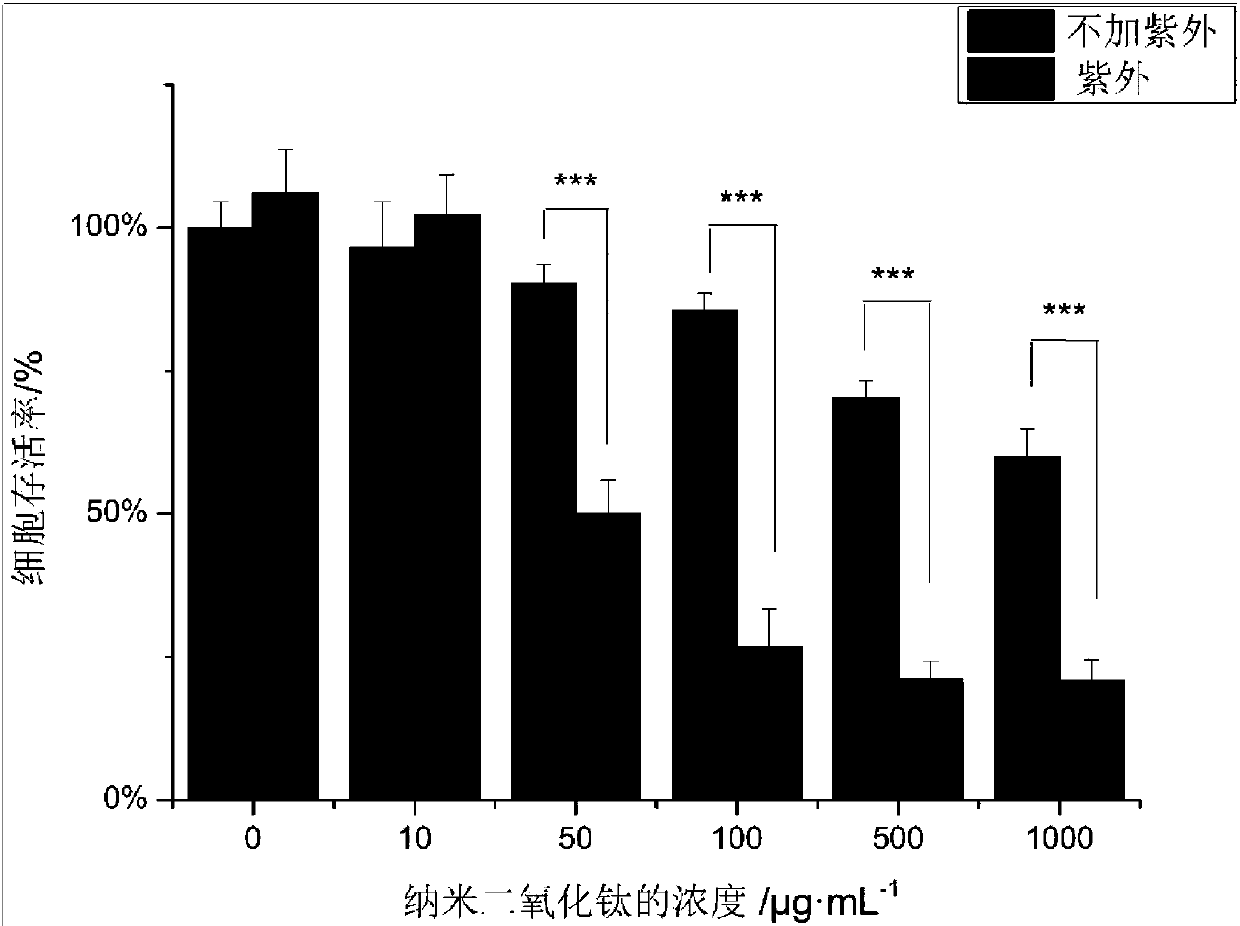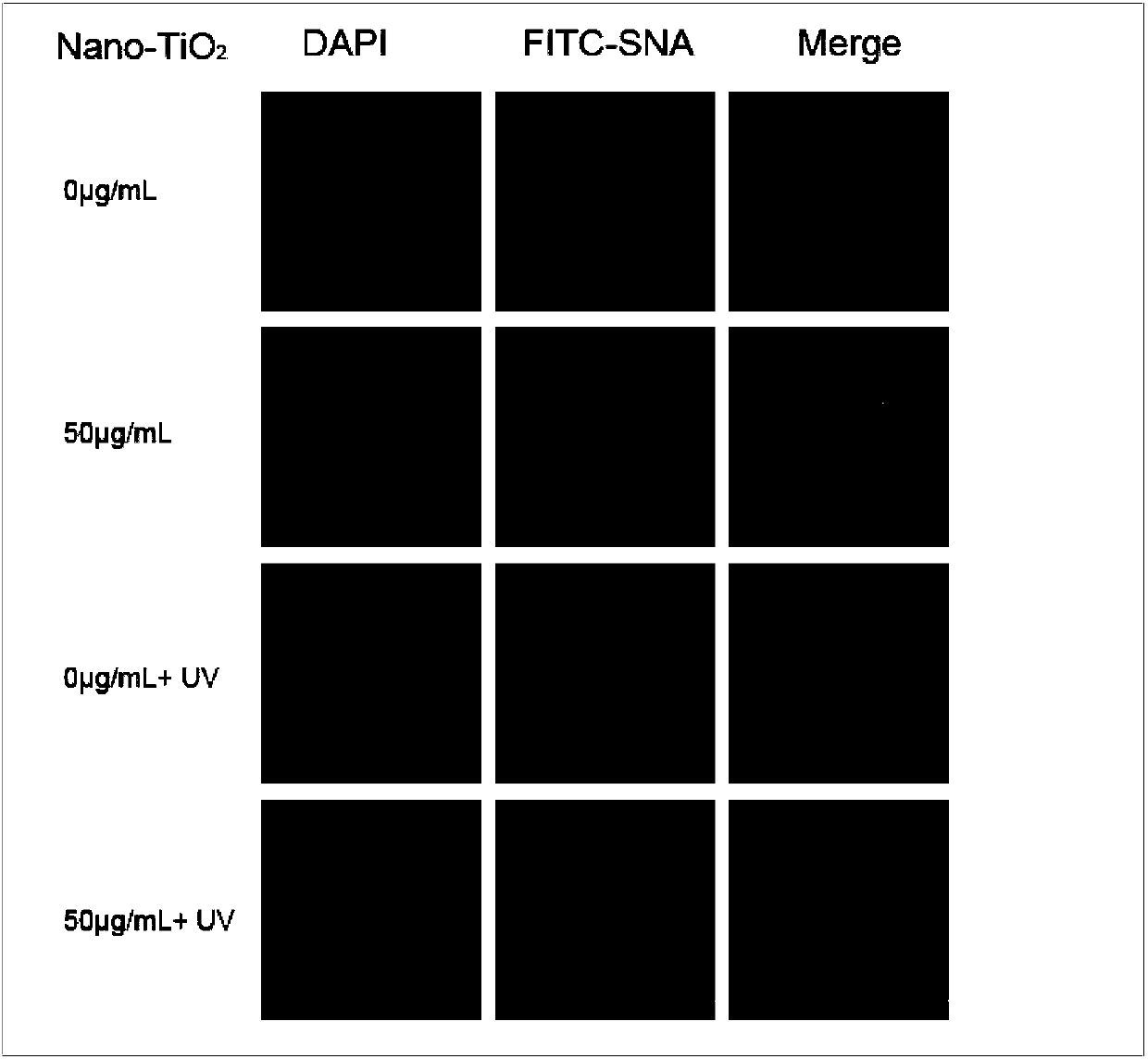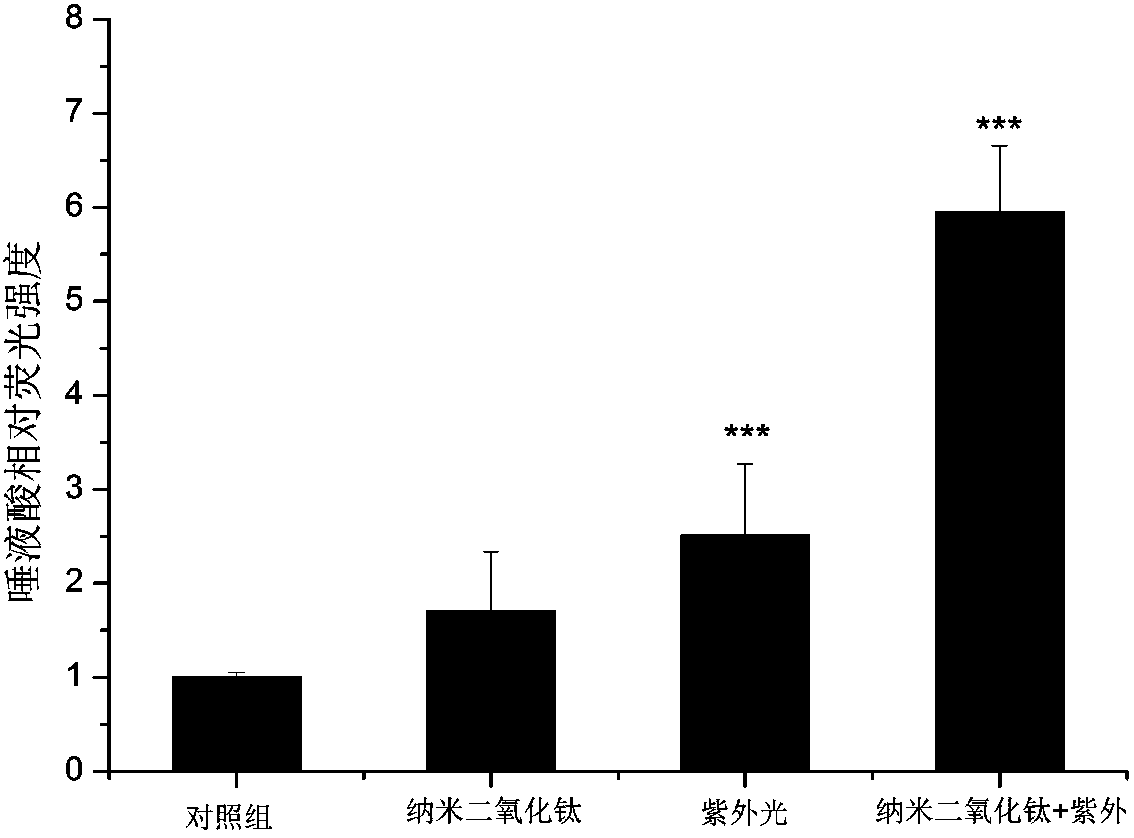Skin safety evaluation method on nanometer titanium dioxide based on HaCaT cells
A nano-titanium dioxide, safety evaluation technology, applied in biochemical equipment and methods, color/spectral property measurement, microbial determination/inspection, etc., can solve problems such as complex methods
- Summary
- Abstract
- Description
- Claims
- Application Information
AI Technical Summary
Problems solved by technology
Method used
Image
Examples
Embodiment 1
[0105] Cell culture: HaCaT cells were cultured in DMEM complete medium containing 10% fetal bovine serum, 1% penicillin and streptomycin, and the culture environment was 5% CO 2 and a 37°C constant temperature incubator. The medium was changed every day, and the cells in the logarithmic growth phase were taken for experiments.
[0106] Preparation of nano-titanium dioxide suspension: Accurately weigh 5 mg of nano-titanium dioxide, add 1 mL of LPBS to mix, sonicate for 5 min, and dilute to 10, 50, 100, 500, 1000 μg / mL with DMEM medium for later use.
[0107] Nano-titanium dioxide phototoxicity experiment: take HaCaT cells in the logarithmic growth phase, add 0.25% trypsin to digest, cell suspension 1x10 5 / mL, 100 μL per well was added to a 96-well plate, and cultured in an incubator for 24 hours. Nano-titanium dioxide was diluted with DMEM at different concentrations of 10, 50, 100, 500, and 1000 μg / mL, and 100 μL was added to each well in sequence. At the same time, DMEM cu...
Embodiment 2
[0110] Changes in the expression level of α-2,6 sialic acid in cells: HaCaT cells in the logarithmic growth phase were taken at 3x10 per well 6 The cells were added to 6-well plates containing sterile coverslips and cultured for 24 h. The HaCaT cells were treated with nano-titanium dioxide DMEM medium at a concentration of 0.50 μg / mL for 21 hours. Wash off the supernatant, add PBS, treat with 365nm ultraviolet light for 1 hour, replace PBS with DMEM medium, and incubate for another 2 hours in the incubator. Then discard the supernatant, wash 2-3 times with PBS, fix the cells with 4% paraformaldehyde for 15 minutes, then add 10 μg / mL FITC-labeled SNA and incubate for 1 hour, and wash off excess dye with PBS. DAPI was added for staining for 15 minutes, and excess dye was washed with PBS. Transfer the coverslip to a glass slide, drip anti-fluorescence quencher between the cells and the slide, and then seal the slide with neutral resin. Air-dry with neutral resin, that is, it c...
Embodiment 3
[0113]Changes in the expression level of sialic acid in cells are affected by the ROS produced by nano-titanium dioxide under ultraviolet light: after the cells are treated with 0.50 μg / mL nano-titanium dioxide and ultraviolet light, 10 μmol / L DCFH-DA is added, and the incubation is continued for 30 minutes. After washing 2-3 times, the intracellular ROS level can be detected by fluorescence microscope and flow cytometer, the excitation wavelength is 488nm, and the emission wavelength is 530nm. ROSup is a ROS-positive reagent that produces a large amount of ROS after the cells are treated. Add 50 μg / mL ROSup reagent and incubate the cells for 24 hours, then stain with FITC-labeled SNA, and observe the results. Vitamin C (VC) is an antioxidant that can scavenge ROS. After adding nano-titanium dioxide and ultraviolet treatment cells and adding 1mM vitamin C to incubate together, detect HaCaT by lectin SNA staining
[0114] According to the results of fluorescence microscopy, it ...
PUM
| Property | Measurement | Unit |
|---|---|---|
| particle size | aaaaa | aaaaa |
| wavelength | aaaaa | aaaaa |
| concentration | aaaaa | aaaaa |
Abstract
Description
Claims
Application Information
 Login to View More
Login to View More - R&D
- Intellectual Property
- Life Sciences
- Materials
- Tech Scout
- Unparalleled Data Quality
- Higher Quality Content
- 60% Fewer Hallucinations
Browse by: Latest US Patents, China's latest patents, Technical Efficacy Thesaurus, Application Domain, Technology Topic, Popular Technical Reports.
© 2025 PatSnap. All rights reserved.Legal|Privacy policy|Modern Slavery Act Transparency Statement|Sitemap|About US| Contact US: help@patsnap.com



